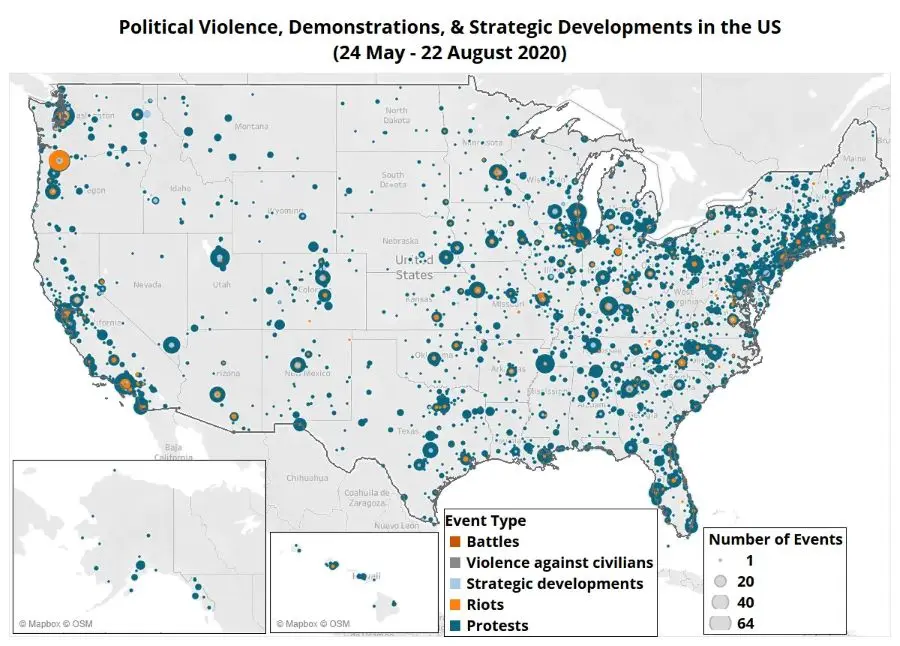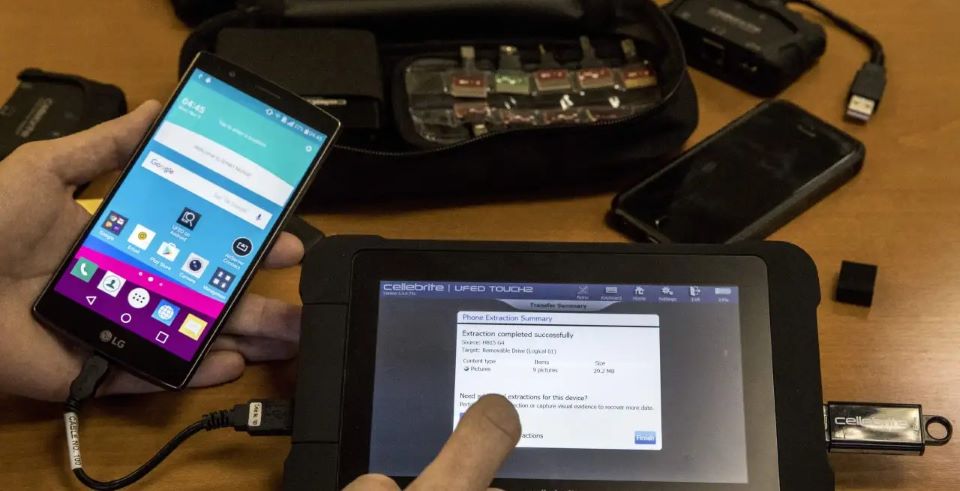In the summer of 2020, we watched as large-scale protests erupted across the United States in response to persistent issues of racial injustice and violence by police. News of data indicating that while many protests occurred, a strong majority were peaceful — studies showed up to 96 percent did not lead to damage to property or injuries. It was a time when society had a rapidly growing desire for change in the United States.
Research featured in multiple reports during that period recorded more than 10,000 demonstration events and highlighted the overwhelmingly peaceful nature of the majority of protests. Finally, data from nationally scattered metropolitan areas underscore the connections between activism and perceived violence. Yet as people lined up to share their perspectives, the numbers began to tell a different story about the nature of these marches versus what we see in the media.
In analyzing the nuances in these episodes, it becomes clear just how critical fact-based understanding is for the debate around political violence and protests. Many in August were present when these numbers emerged, but this data invites easier contemplation of their effects as well as the larger social movements.
Summer 2020: The Birth and Growth of Protests
The summer of 2020 was a turning point of civil unrest in America. Major events, including the killing of George Floyd, inspired protests nationwide. The COVID-19 pandemic, the Black Lives Matter movement, and federal actions all played a part in the bigger story of demonstrations.
How the COVID-19 Pandemic Helped Fuel Civil Unrest
The COVID-19 pandemic was pivotal in both the life and death of the protests of 2020. Lockdowns contributed to heightened nearness a sense of isolation and frustration. Not everyone was angry with the government, but economic hardship compounded the anger of all but the wealthiest citizens.
As cities were reopening, protests overlapped with calls for justice. People who had been salted at home poured into the streets. That sense of pandemic fatigue, mixed with demands for social justice, translated into urgency in the demonstrations. Many were drawn to take action, despite health risks.
Black Lives Matter Movement and a National Mobilization
Protests sprung across the country — and the Black Lives Matter movement began to pick up traction. It sought to confront systemic racism and police violence. The events that followed the death of George Floyd in May 2020 united people from all walks of life.
Local demonstrations were coordinated in cities including Portland, Ore., in a show of national mobilization. Signs demanding justice and accountability filled the protests. Local and national leaders amplified the demand for racial justice, igniting an urgent conversation about reform.
Federal Response to Racial Justice Protests
The federal response to the protests varied considerably. Initially, local law enforcement managed events. As violence escalated in some areas, the Trump administration deployed the National Guard to restore order.
Federal agents were also sent to cities like Portland. Their presence led to clashes between protesters and law enforcement. The use of tear gas and other measures raised concerns about civil liberties, igniting further discussions on police practices and federal intervention.
Inflection Points: Major Incidents and Government Intervention
Several key incidents during this period marked pivotal moments in the protests. The use of force by law enforcement became a focal point. Actions taken by the government, such as invoking the Insurrection Act, highlighted tensions between local authorities and federal power.
One notable moment occurred at Lafayette Square, where protesters were removed to clear the path for a photo opportunity by the president. This sparked widespread outrage and led to renewed demonstrations across America. The ongoing coverage of protests and the public’s response often reflected the escalating demands for change and accountability in policing practices.
Examining Patterns of Demonstration Activity and Political Violence
Exploring patterns of demonstration activity and political violence in America can provide valuable information about the drivers of unrest. Real-time data from several sources like ACLED and the US Crisis Monitor allows for deeper analysis of the situation.
Data Collection and Real-Time Monitoring Tools
Real-time data collection methods have advanced significantly to capture the complexity of political violence. The Armed Conflict Location & Event Data Project (ACLED) is an essential source of reliable data on protests and violence.
It monitors 3,200 events per designated pilot periods. Real-time tracking tools have proven to be indispensable for researchers, practitioners, and governments. Another key initiative, the US Crisis Monitor, allows data on demonstrations to be updated frequently, including flows of protests and riots.
ACLED Explains Trends in Demonstration Activity
ACLED found that demonstration activities linked to movements such as Black Lives Matter have spiked over time. For example, the number of recorded events increased almost five times compared with data from previous summers. Most were peaceful protests, focused on combating racial injustice. But it was not without its problems; there were instances in which violence secretly took place. That included clashes with armed individuals, organized groups, and even militias. The presence of groups like the Proud Boys and Boogaloo Bois set off alarms that tension was running hot.
Role of Armed Individuals and Organized Groups
Armed individuals and organized groups have significantly impacted the nature of demonstrations. Some protests saw the presence of militias enforcing their version of law and order. These groups, often politically motivated, escalate tensions during demonstrations.
Additionally, there was a rise in confrontations between these armed entities and law enforcement. Incidents involving Ku Klux Klan members also symbolized the threat of organized hate groups during civil unrest. Such dynamics create an unpredictable environment, heightening the risk of violence.
Police Violence and the Use of Less-Lethal Weapons
Police response to demonstrations has come under scrutiny, particularly concerning violence and the use of force. Reports indicate excessive police force against peaceful protesters, leading to severe criticism and public outcry.
Law enforcement often resorted to tear gas, rubber bullets, and pepper spray to disperse crowds. These tactics sometimes resulted in injuries, which intensified the perception of police brutality. The deployment of federal agents further complicated matters, as they were often seen as an escalation rather than a means to restore order. The response from law enforcement continues to spark discussions about police abuse and the government’s role in managing domestic unrest.



